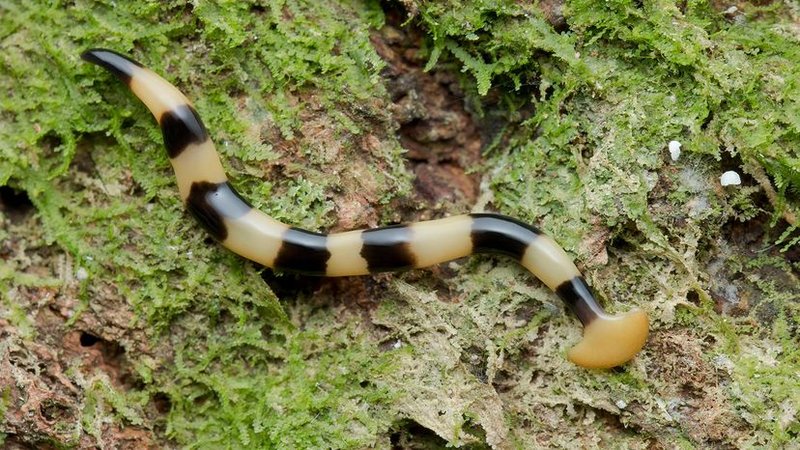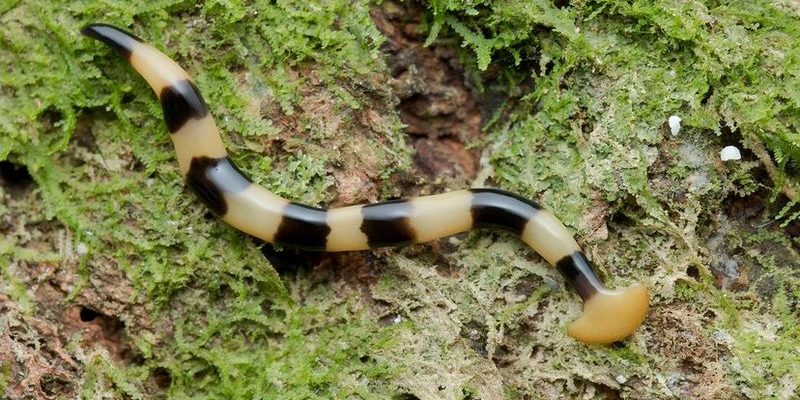
To put it simply, hammerhead worms, particularly the species known as the *Bipalium kewense*, are not your average worms. They’re actually part of the flatworm family and are known for their striking appearance and unique hunting techniques. While they aren’t classified as poisonous to pets, there are some important details to consider. So grab your favorite drink, and let’s get into what you really need to know about these squiggly invaders.
What Are Hammerhead Worms?
Hammerhead worms are a unique type of flatworm that stand out due to their interesting shape. The name “hammerhead” comes from their broad, flattened heads, which resemble the tool that inspired their name. They can vary in colors, often seen in shades of gray, brown, or sometimes even vibrant hues.
These worms are known for their predatory nature. They primarily hunt down and feast on earthworms and other small invertebrates. Instead of just munching through their prey, they use a toxic secretion to paralyze them. In fact, they produce a substance called *neurotoxin*, which is quite effective for subduing their meals. Here’s the kicker—although this toxin is powerful enough to affect smaller creatures, it doesn’t necessarily make them dangerous to larger animals like dogs or cats.
But before you dismiss them completely as harmless, let’s dive deeper into how these worms might interact with pets and wildlife.
Are Hammerhead Worms Harmful to Pets?
So, can your furry friends safely coexist with hammerhead worms? While they aren’t directly poisonous to pets, there are some considerations to keep in mind. If your dog or cat decides to play with or eat a hammerhead worm, they might experience some mild to moderate stomach upset. Vomiting or diarrhea can occur, but serious health risks are uncommon.
If you notice your pet acting strangely—like excessive licking of their lips, drooling, or other unusual behavior—after an encounter with a hammerhead worm, it’s best to call your veterinarian. They can help determine if your pet needs any treatment or just a little extra care.
It’s also worth noting that some animals naturally avoid these worms, thanks to their distinct smell and texture. The bright colors of some species can act as a warning, signaling that they might not taste good or could upset their stomachs. So, while hammerhead worms aren’t outright toxic to pets, it’s always best to keep an eye on their interactions.
Impacts on Wildlife
When it comes to wildlife, hammerhead worms can be a bit more troublesome. They are known to outcompete native earthworms, which can upset local ecosystems. Since these native worms play a vital role in soil health by aerating and enriching the earth, their decline can lead to broader implications for plant life and food chains.
Species like birds or small mammals that rely on earthworms as a food source could find themselves in a bit of a bind if hammerhead worms reduce the population of their prey. Additionally, while larger animals may not be harmed by the hammerhead worms directly, the ripple effects on the ecosystem can still be concerning.
Do you want your garden to thrive with healthy soil and healthy wildlife? Keeping an eye on hammerhead worm populations and taking action to control them can help maintain that balance.
Identifying Hammerhead Worms
If you’re worried about hammerhead worms in your yard, knowing how to identify them can be extremely helpful. They typically measure between 4 to 12 inches long and have a very flat body. The head is easily recognizable, with a broader shape that tapers down toward the tail.
The surface texture may appear shiny due to their moisture-retaining skin, and you might notice a slight slickness if you touch them. Their movement is also quite distinct—they glide along the ground rather than wriggling like traditional earthworms. If you see one, it’s likely doing its hunting thing, looking for food.
If you’re not sure whether you’re dealing with a hammerhead worm or another species, consider taking a photo and comparing it to online resources or local guides. Knowledge is power, and identifying these creatures can help you manage them if needed.
What to Do if You Find Hammerhead Worms
Encountering hammerhead worms in your yard doesn’t mean it’s time to panic. If you spot one, there are a few simple steps you can take to manage the situation. Here are some effective ways to deal with them while keeping your pets and garden safe:
- Remove Them by Hand: If you’re comfortable, you can wear gloves and pick them up to relocate them. Make sure to dispose of them far away from your garden to prevent them from returning.
- Use Traps: You can create traps using shallow dishes filled with beer or soapy water. The worms will be attracted to the liquid and drown.
- Keep Your Yard Clean: Reducing the damp areas in your garden can make it less inviting for these worms. Regularly clear away debris and maintain good drainage.
- Educate Others: Share what you’ve learned about hammerhead worms with friends or neighbors. The more people are aware, the better we can manage their spread.
Taking action does not have to eradicate all worms—it’s all about finding a balance that works for your environment.
Final Thoughts on Hammerhead Worms
In the grand scheme of things, hammerhead worms are a fascinating yet puzzling addition to our gardens. While they aren’t poisonous to pets or wildlife, their presence can disrupt local ecosystems and occasionally cause mild health issues for curious pets.
By understanding their characteristics and behaviors, you can manage their presence in your yard effectively. Remember, it’s all about balance—allowing nature to coexist while maintaining the health of your garden and pets.
Whenever you come across something unfamiliar, whether it’s a hammerhead worm or another curious creature, stay informed and take the appropriate steps. After all, knowledge is your best tool in creating a safe and healthy environment for everyone involved!

